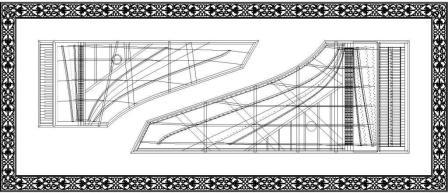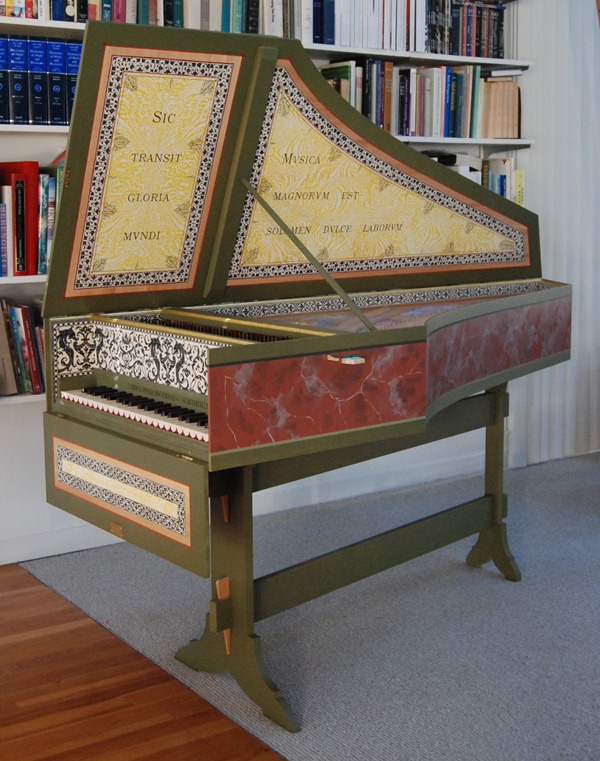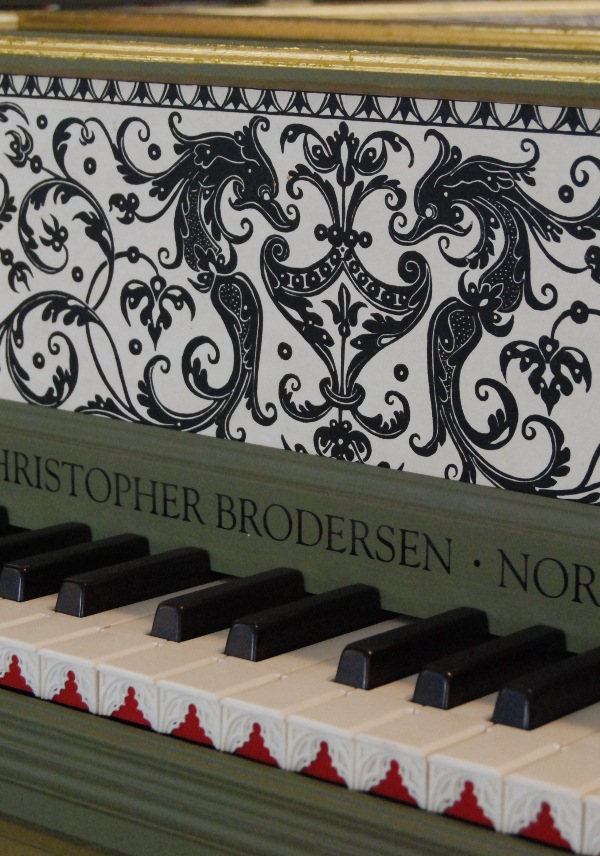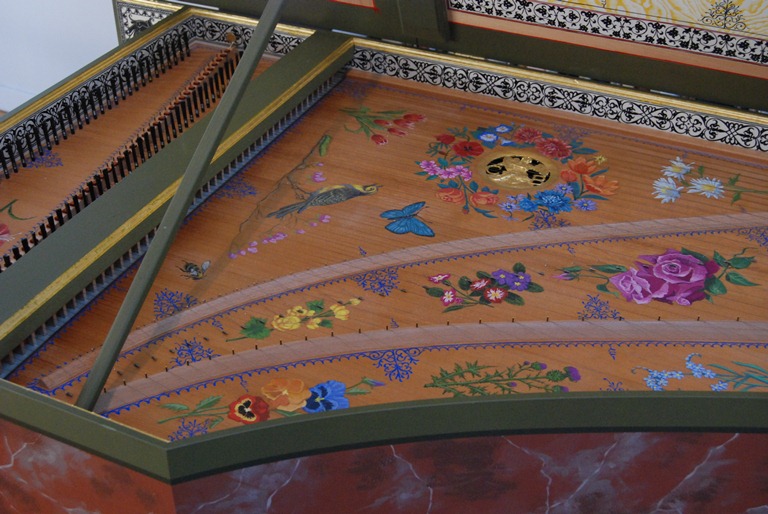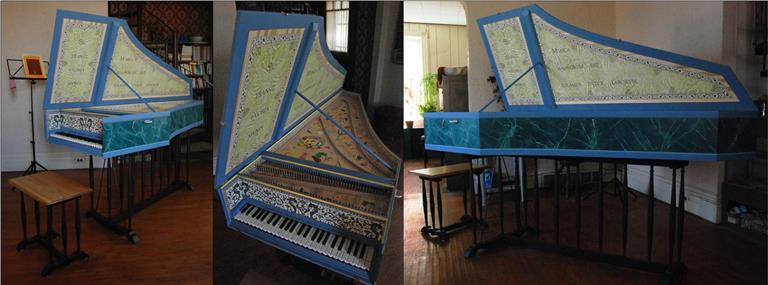
The single-manual Flemish harpsichord, as built by the Ruckerses and the Couchets over the course of 150 years, is the perfect instrument for the budget-conscious harpsichordist or organist. Its full, surprisingly powerful sound makes it the ideal continuo instrument. Its light weight (about 50 lbs or 23 kg minus lid and stand) is a decided advantage, making for easy transport.
The instrument will fit easily in a small hatchback (with the rear seats down), as will the knock-down stand.
The usual disposition for a Ruckers single-manual was just two sets of strings: an 8-foot and a 4-foot. I prefer to retain the sound and playing characteristics of the original, but an acceptable option is to fit the instrument with two 8-foot registers. For many amateur players, not having to tune the 4-foot register on a daily basis will be a welcome relief.
There is a buff, or harp stop that is split between treble and bass, allowing for some novel effects (pizzicato bass
against full treble, etc.) that are characteristic of the music written for this type of harpsichord.
The overwhelming majority of single-manual Flemish harpsichords produced during the period from c.1550 to c.1700 had a compass of only 45 notes, from C/E (short bass octave) to c'''. Surprisingly, with this rather limited keyboard the entire Elizabethan and Jacobean literature for virginal and harpsichord, such as contained in the Fitzwilliam Virginal Book, is playable. As explained above, two optional compasses are either a fully chromatic four-octave keyboard, from C to c''', or a fully chromatic 56-note keyboard, GG-d'''. (The latter requires an enlarged case, both in width and length). Both of these dispositions were rare but apparently sanctioned during the 17th and early 18th centuries; all of J.S. Bach's Well Tempered Clavier is playable on the latter.
Normally the instrument is tuned to a'=415 Hz, but it
can be fitted with a transposing keyboard, which allows it to be played at a'=440 Hz. The change-over to modern pitch is very easy, involving the removal of the right-side cheek piece and a simple shift of the keyboard.
Other, less elaborate decorative schemes than the ones shown in the photos are possible; this will greatly reduce the cost and place this little Flemish within the reach of almost any budget.
I am currently taking orders for harpichords based on the 1637 Ruckers--please inquire as to price and availability.
Ruckers Sound Sample
Click here to play the sound
